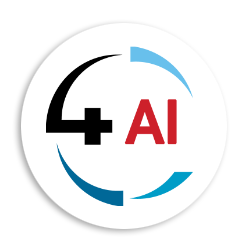Blog - Channel Partner
ERP Readiness for Nonprofits: What to Know Before You Buy

Nonprofits are often asked to do the impossible: deliver life-changing impact using the digital equivalent of duct tape and good intentions.
You start with heart. You build programmes. You scale. But somewhere between chasing down receipts, reconciling donations and reporting to your board, things get messy. Really messy.
The good news? Microsoft Dynamics 365 Finance and Operations is built for exactly this kind of growth. The better news? You do not have to dive in head first.
In this blog, we are not selling ERP. We are asking the bigger question: Is your nonprofit ready for ERP? And if not yet, what will get you there?
ERP is not a badge of success. It is a tool for operational maturity
Let us clear one thing up. ERP (Enterprise Resource Planning) systems like Microsoft Dynamics 365 are not about "keeping up with the big organisations." They are about structuring your operations in a way that protects your mission and makes your impact sustainable.
ERP is not the destination. It is the vehicle that gets you to your next level of clarity, compliance and control.
But not every nonprofit is ready to drive that vehicle today. And that is completely fine. In fact, recognising when to pause and prepare is one of the smartest moves a growing organisation can make. Just as you would not expand a programme without a strategy, you should not scale your operations without the right foundation.
Five signs your nonprofit might be ready for ERP
Here is how you know it might be time to step up:
- Your team spends more time managing data than using it
If reporting takes hours, not minutes, and no one trusts the numbers without a triple-check, you are due for a centralised system.
- Growth is exposing the cracks in your current tools
What worked for 10 staff no longer works for 50. More programmes mean more data, more complexity and more risk.
- You are managing restricted funding or multi-donor projects
ERP helps you track every cent and tie it back to specific donors, outputs or compliance requirements.
- Audits have become high-stress events
If audit prep involves late nights, missing receipts and miracle-working finance staff, you need real-time financial oversight.
- You are relying on one spreadsheet wizard to hold everything together
What happens when they leave? ERP ensures institutional knowledge is captured and shared, not siloed.
Recognising these signs early can help you plan, budget and secure leadership buy-in before things spiral. ERP readiness is not about being perfect. It is about being proactive.
What to put in place before you implement ERP
Jumping into ERP too soon can lead to frustration, budget creep or failed adoption. So what should you do before you say yes?
- Document your current processes
Map how things are done now. It might not be pretty, but it gives your implementation partner a realistic view of what needs to change.
- Get leadership aligned
ERP is not just a finance system. It touches HR, programmes, procurement and more. Your leadership team needs to be on the same page.
- Clean your data
Garbage in, garbage out. Take time to clean vendor lists, donor databases and transaction histories so your new system starts strong.
- Identify your internal champions
ERP rollouts need advocates. Find the staff who understand both the tech and the mission and give them ownership.
- Start small, but start smart
You do not have to implement every module on day one. Prioritise based on need and impact.
A little groundwork goes a long way. When you involve the right people early and approach implementation in phases, you can avoid the most common pitfalls and build real momentum.
How Microsoft Dynamics 365 Finance and Operations fits into this journey
Microsoft’s ERP offering is modular, cloud-based and highly adaptable to nonprofits. That means you can implement what you need, when you need it.
Key benefits for nonprofits include:
- Donor-specific financial tracking
- Automated reporting and compliance tools
- Inventory and procurement controls
- Project-based budgeting and forecasting
- Role-based access and audit trails
You can also connect ERP with other Microsoft tools like Power BI for live dashboards, Teams for cross-functional collaboration and SharePoint for secure document management.
And with Microsoft’s special nonprofit licensing, the cost is far more accessible than many assume. This makes enterprise-level functionality attainable for even mid-sized nonprofits with the right support.
Why working with a CSP Indirect Reseller matters
You do not need to figure this out alone.
At 4Sight Dynamics Africa, we support CSP Indirect Resellers across the continent who are trained in implementing ERP for nonprofits. These are not one-size-fits-all consultants. They are partners who understand your structure, your sector and your speed.
They will help you plan, implement and grow into ERP the right way. Whether your team needs custom reporting, automated workflows or training support, our partner network is equipped to deliver.
Connect With a Microsoft Nonprofit Cloud Reseller Partner
If your nonprofit is asking bigger questions about sustainability, visibility and control, that is a good sign. That is the start of ERP readiness.
You do not need to rip everything out and start again. But you do need a system that grows with you, supports your team and keeps your mission on track when the stakes are high.
ERP is not a finish line. It is a tool for resilience. And when you are equipped with the right systems, the right partners and the right mindset, your organisation becomes unstoppable.
Contact us at This email address is being protected from spambots. You need JavaScript enabled to view it., Let us help you get there?


